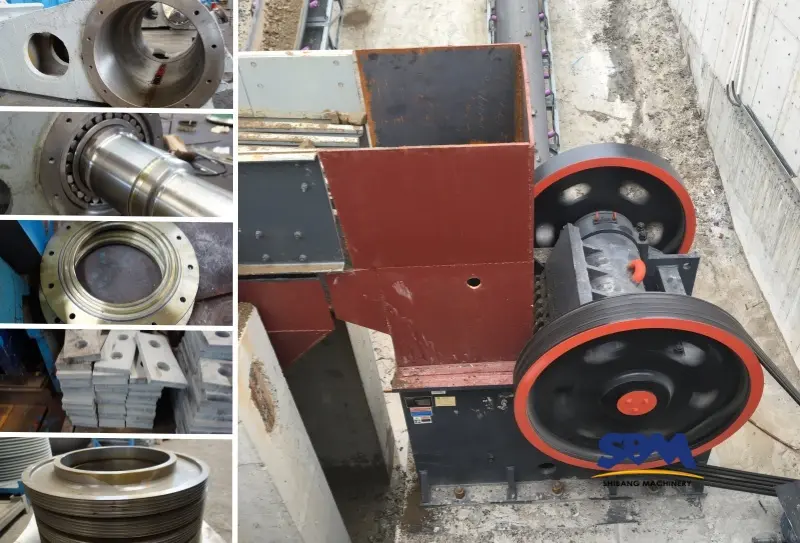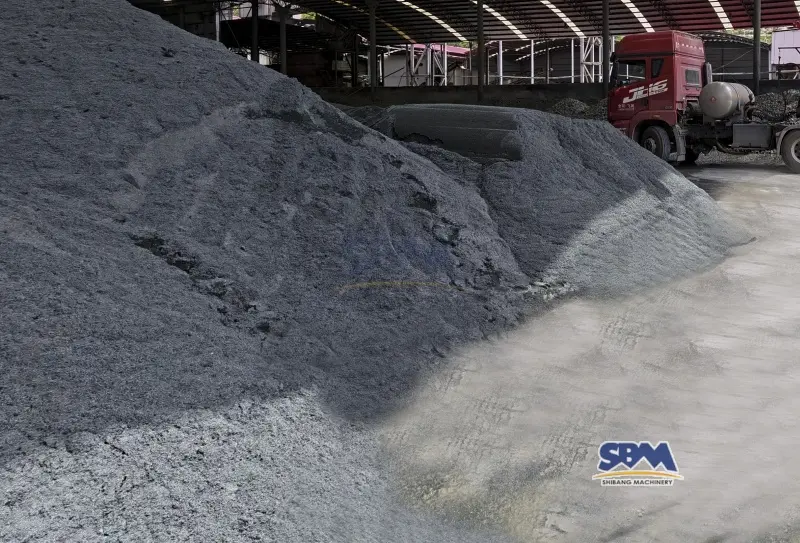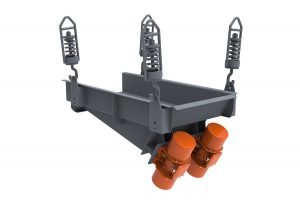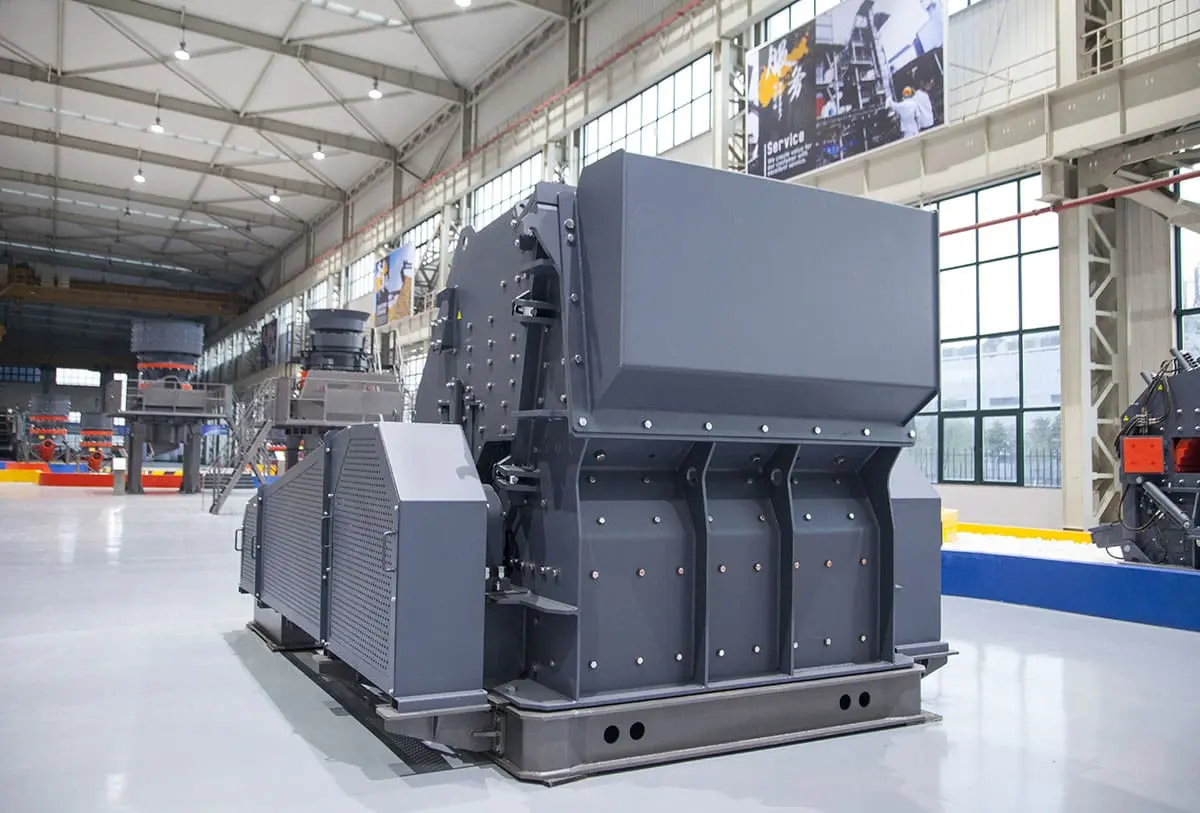Correo electrónico: [email protected]
línea de trituración de piedra arenisca para la venta
The sandstone crushing line equipment is manufactured by SBM, the first line on the market. The sandstone crushing line’s capacity is 60-70 montones.
Solicitud: Mainly supply for the construction of the Xijiang Hydroelectric Power Station.

Sandstone crushing line configuration
VSI5X9532 VSI5X series centrifugal impact crusher (1 pc.).
Technological process of sandstone crushing line
The raw materials enter the European BANCO DE IGLESIA 1100 hydraulic jaw crusher for rough crushing with ZSW490 * 130 feeder, and then enter the CSB240 cone crusher for second crushing, and the material after crushing will enter the 2Y2460 vibrating screen for screening. Además, the recycled material enters the secondary crusher, the materials less than 150mm enter the HPT300 for third crushing, and more than 40mm will continue to enter the HPT300 for repeated crushing, less than 40mm will also enter the VSI5X-1145 impact crusher. The finished size reaches 0-5mm, 5-10milímetro, 10-20milímetro, 20 – 31.5milímetro, and the current sandstone crushing production line has high productivity and good grain shape.
Advantage of sandstone crushing line
- Adopt the latest type of European hydraulic jaw crusher, V type crushing cavity structure with large breast, strong adhesive force and large capacity; Adjust the outlet gap size with a wedge-shaped hydraulic system, saving debugging time. Furthermore, adopting centralized lubrication, it is very convenient for maintenance.
- The third crushing unit adopts a multi-cylinder hydraulic cone crusher. It combines higher speed and stroke, greatly improving the rated power and throughput of the HPT crusher, as well as the crushing ratio and production efficiency. The special crushing cavity design and rotating speed significantly improve the fine-grained material proportion and product cubic content, and fully reduce the occurrence of needle-shaped materials. The multi-cylinder hydraulic cone crusher uses a liquid lubrication system, allowing it to operate without manual refilling per shift, saving labor costs. Furthermore, it is very convenient for equipment maintenance, reducing production and operating costs.
- The production line adopts three-stage crushing, which achieves the maximum optimization of the crushing degree at all crushing levels. After the second crushing, the secondary screening is carried out, and then the material is directly processed. This not only reduces the crushing pressure of the tertiary cone crusher, but also the entire production line can achieve the maximum optimization of production capacity.
What is the sandstone sand making process?
The detailed sandstone sand making process and technology usually includes these main steps and methods:
1. Raw Material Preparation
Sandstone is first taken out from quarries. Large blocks are fed into the crushing system—usually starting with a jaw crusher—to break them into smaller pieces for further processing.
2. Crushing Stages
Primary crushing with a jaw crusher breaks sandstone blocks into manageable pieces. Aplastante secundario, often done with an impact or cone crusher, further reduces the size to make sand-sized particles.
3. Screening and Classification
- Vibrating screens separate the crushed material by size.
- Oversized pieces are returned for further crushing, while properly sized material proceeds to sand production.
4. Sand Making and Shaping
Special sand making machines or vertical shaft impact crusher (TODOS) further grind and shape the particles to get the desired sand shape, size range, and surface texture. This step makes the sand more uniform and improves its performance for different uses.
5. Washing and Purification
The crushed and shaped sand is washed to remove impurities such as clay, silt, or other unwanted materials. Cleaning methods may include scrubbing, separating by density (cycloning), or using gravity to improve purity.
6. Dewatering and Drying
After washing, the sand is dried using vibrating screens, hydrocyclones, or belt presses to remove excess water. Drying machines might be used if dry sand is needed for the final product.
7. Quality Control and Stockpiling
The processed sand is tested for size, forma, cleanliness, and physical qualities. Final sorting ensures the sand meets industry standards. Good-quality sand is stored and prepared for delivery or further use.
Process Flow Summary
| Paso | Descripción |
|---|---|
| Quarry Extraction | Sandstone blocks extracted and transported |
| Trituración Primaria | Jaw crusher breaks large blocks into smaller fragments |
| Trituración Secundaria | Further size reduction with impact/cone crushers |
| Poner en pantalla | Size classification with vibrating screens |
| Sand Making | VSI or sand-making machines shape and grade particles |
| Lavado | Removal of impurities by washing and scrubbing |
| Dewatering/Drying | Removal of excess moisture, sometimes drying sand |
| Quality Control | Testing particle size, forma, and cleanliness |
| Stockpiling | Final product stored and prepared for shipment |
This detailed sandstone sand making process guarantees the production of top-quality sand suitable for construction, foundry, water filtering, and other industrial uses. The choice of technology and equipment depends on the type of raw sandstone and the required sand specifications, aiming to balance productivity and environmental protection.
Oficina central
Whatsapp:+8615225176731
Correo electrónico: [email protected]
DIRECCIÓN: No. 1688, Camino del este de Gaoke, Nuevo distrito de Pudong, Llevar a la fuerza, Porcelana.
Sitio web: https://www.mill-sbm.com/




